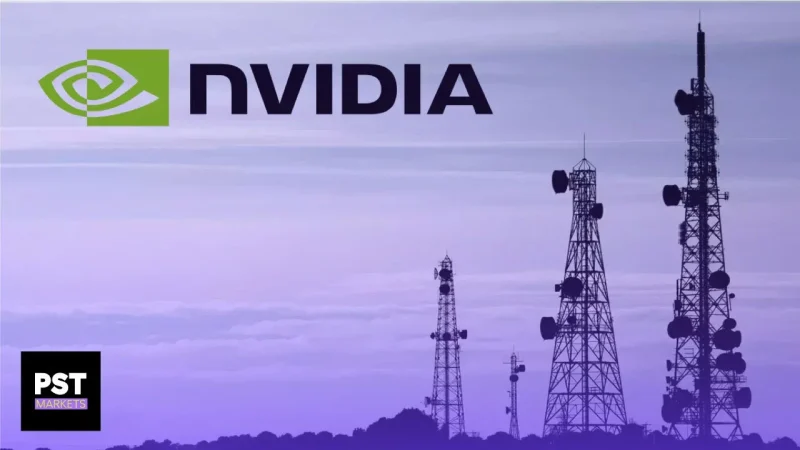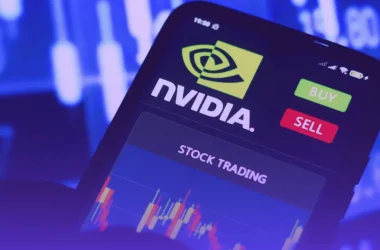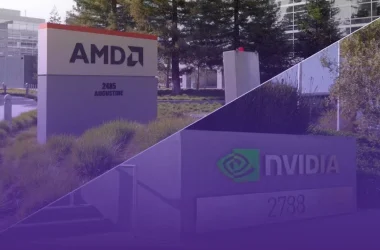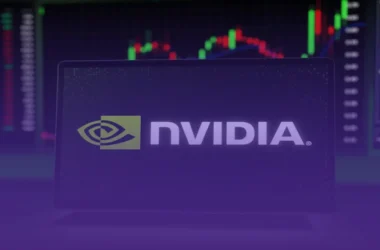Nvidia (NASDAQ: NVDA) is set to transform how the telecoms industry works. In a groundbreaking move, the AI giant has joined forces with the software powerhouse ServiceNow (NYSE: NOW) to unleash the full power of AI technologies in the telecom industry. NVDA stock was up 1.2% in premarket trading after the announcement.
However, this news was completely overshadowed by the news of Nvidia achieving a mind-blowing valuation of $2 trillion on the 23rd of February, before falling below that mark again, with only Microsoft (NASDAQ: MSFT) and Apple (NASDAQ: AAPL) having higher valuations.
Even though it took Nvidia 24 years to reach its first trillion, the second trillion was achieved in just eight months thanks to the company’s legendary role in the AI revolution. Now, Nvidia is determined to continue expanding its AI technologies to more industries, and this time the company turned its focus to the telecoms market.
Nvidia and ServiceNow’s Collab
Over the past decade, Nvidia has successfully built an impregnable lead in producing advanced chips that can perform complex tasks related to AI, like image, facial, and speech recognition. In fact, these chips were so advanced that they were used to generate text for OpenAI’s ChatGPT. This is just one example of how important Nvidia’s role is in the AI revolution. Of course, the company is well aware of that fact, and now plans to revolutionize every industry out there with AI.
Which is why it’s teaming up with a software company called ServiceNow, a company that specializes in developing a cloud computing platform that helps businesses manage digital workflows for their operations, to build generative AI offerings specifically for telecoms companies. The first of these offerings, called Now Assist for Telecommunications Service Management, is built on the Now Platform, and will be a customer-service platform that will use Nvidia’s AI technologies to boost the productivity of the customer service agents, speed time to resolution, and enhance customer experiences.
This project comes at a very strategic time, as many companies in the telecoms market are now looking for ways to reduce costs so they can explore new business opportunities, and one way they can do that is by turning to AI and automation. In fact, according to a survey from the International Data Corporation, 73% of global telecoms companies prioritize investing in AI and machine learning technologies to support their future operations.
In the joint statement Nvidia and ServiceNow made, Rohit Batra, ServiceNow’s general manager and vice president for telecom, media, and tech, said that AI will soon become an absolute game-changer for telecoms companies, and that ServiceNow is happy to lead the transformation with Nvidia.
Now Assist
The new product, Now Assist, will have many features that will be powered by ServiceNow’s fine-tuned large language models, as well as Nvidia’s AI enterprise software platform for the development and deployment of production-grade AI applications, including generative AI.
These technologies will help it provide customers with accurate and fast support, as well as chat summarizations powered by generative AI. It won’t completely replace human customer service agents, but it’ll help them track their work activity, and guide them with the next best actions they should take.
Even though the news of this product was made public very recently, it’s already being tested by one of the leading providers of mobile and T.V. services in the United Kingdom, a company called the BT Group (LON: BT.A). This company was picked because it’s been among the very early adopters of automation in the telecoms industry, and it had already partnered up with ServiceNow before to consolidate its legacy service management platforms into a single system.
If Now Assist ends up working out for Nvidia and ServiceNow, you might as well say that the two companies have successfully created a solution to the main problem facing the telecoms industry, and one that will drive a large-scale transformation for telcos globally. Not only that, but the success of Now Assist will also lead to more offerings from the ServiceNow and Nvidia long-term partnership, which was first announced in May of 2023 with the goal of reshaping how digital businesses operate.
The two companies didn’t clarify any financial details of the deal, not even how much the new offering will cost, but it’ll certainly make them a lot of money. This is because ServiceNow is one of the biggest software companies globally, with a market cap of $158.05 billion. Also, it’s the U.S. market leader when it comes to providing platforms for businesses, as 85% of Fortune 500 companies use its Now Platform.
The two companies have an established market and user base that they can market their newest offering to and sell it with ease, or make it part of ServiceNow’s existing platform that have license costs ranging from $70 to $100 per user for an application. Additionally, the global telecoms market was valued at approximately $1.8 trillion in 2022, and it’s expected to grow at a compound annual growth rate of 6.60% from 2023 to 2030, so there’s a large opportunity for the two companies.
Nvidia’s Groundbreaking Earnings
The company still has so much more to offer. In fact, Nvidia reported outstanding results for the fiscal year 2024’s Q4, as the company’s total revenue came in at $22 billion, a whopping 265% year-over-year increase. Profitability was also high, as the gross margin was 76%.
The diluted EPS reached $4.93, which was also an unbelievable increase of 765% from the same period in the previous year. These results beat even the most optimistic expectations, as Nvidia told investors in the previous quarter to expect a revenue of $20 billion, and a gross profit margin of around 74% to 75%.
Additionally, demand for the company’s AI offerings are nowhere near slowing down, and this is made crystal clear by looking at the revenue of Nvidia’s Data Center segment, which is the segment in which the company reports its AI profits. Revenue for that segment was $18.4 billion for the quarter, making it Nvidia’s leading segment. This was an increase of a staggering 409% year-over-year, and Nvidia said that this is mainly attributed to its AI products.
Another great aspect about the company is its powerful GPUs, which it uses for its own operations, but also sells to massive names in the tech world like Amazon Web services, Google Cloud, and Microsoft, which shows that Nvidia is not going anywhere anytime soon.
The company’s forecast for the next quarter’s results is just Nvidia basically telling investors: If you thought this quarter was good, wait until you see the next one. Nvidia forecast $24 billion in total revenue, as well as a gross profit margin between 76% and 77%.
These earnings results were honestly the best response to critics who say that Nvidia has peaked and that it’s too late to buy NVDA stock now, but the company still has plenty of room to grow, which is why it might be a good idea to buy NVDA stock if you’re an investor who’s interested in NVDA stock, and the same goes for holding the stock if you’re already a NVDA stock shareholder.
Risks Facing NVDA Stock
Perhaps the biggest risk facing NVDA stock is the company’s declining sales in China, which used to account for around 20% to 25% of Nvidia’s revenue in its data center segment. But now, China accounts for only a “mid-single digit percentage” of Nvidia’s data center revenue, according to Nvidia’s CFO, Collette Kress.
Of course, the declining revenues from China is not Nvidia’s fault, but they’re a direct result of the sanctions the U.S. government put on China to restrict its access to new chip technologies. Nvidia tried to find its way around this ban, and started to market a new AI chip designed specifically to comply with the U.S. export rules.
This new chip was supposed to launch last November, and yet the launch was delayed for unknown reasons, but sources close to the matter said that it was because of issues server manufacturers were having in integrating the chip. In January of this year, there were some rumors going around that said that Nvidia would launch this China-specific chip in Q2 of 2024. But, while the company is trying to do something to maintain its stake in the Chinese market, especially after the rise of strong chip-making competitors like Huawei Technologies in the country, nothing has been confirmed yet and China remains a point of weakness for Nvidia.
You could also say that competitors in the U.S., like Intel (NASDAQ: INTC), Arm (NASDAQ: ARM), and AMD (NASDAQ: AMD), could be considered a risk to Nvidia’s position as the market leader, but Nvidia itself would be quick to prove that wrong. In fact, when AMD unveiled new AI chips in December of last year, and said that they were better than Nvidia’s chips, Nvidia quickly fired back in a blog post disputing the claims, and saying that AMD’s chips didn’t use optimized software in making its performance claims, and if it did, Nvidia’s chips would be twice as fast.
Disclaimer
Please visit and read our disclaimer here.









